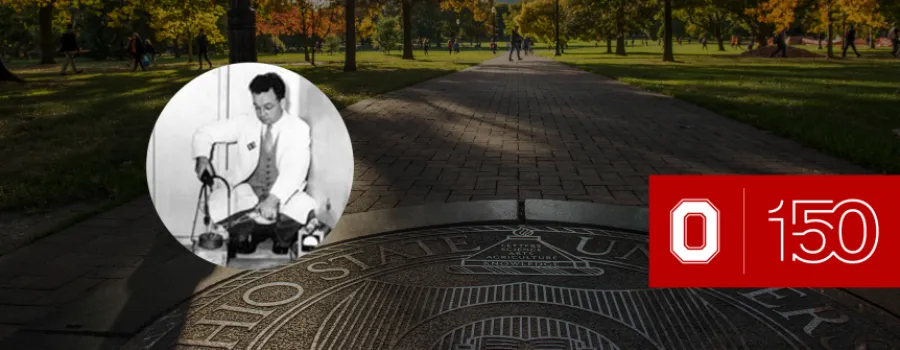
In 1981, while being awarded the Georg Charles de Havesy Nuclear Pioneer award, the presenter dubbed William Myers (1908-1988) ‘the godfather of the cyclotron.’ His road to that honorific began much earlier – in 1940, just a year after Ernest O. Lawrence was awarded the Nobel Prize for inventing the cyclotron. It was in that year that Myers attended an Ohio State lecture by John Lawrence (Ernest’s brother) on the device’s potential uses in medicine. Thus began his life-long research pursuit – using the cyclotron to develop radioactive isotopes for medical use.
Myers was instrumental in bringing a cyclotron to Ohio State’s Department of Physics in 1941, before beginning his wartime service as radiation officer and monitor during Operation Crossroads, the first post-World War II nuclear bombing tests. That experience cemented his interest in what he called “atoms for peace.”
During his long tenure at Ohio State, Myers introduced 11 radionuclides for cancer diagnosis and treatment – more than any other nuclear medicine practitioner of his era. Initially, nucleotide were implanted into tumors as radioactive seeds, which he helped develop. Perhaps his most important contribution, in 1948 he introduced Cobalt-60 as a substitute for radium in cancer treatment. Today, Cobalt-60 is especially used in Gamma Knife therapy (a technique for focusing many beams of radiation onto a small volume, such as a tumor, permitting intense doses of radiation to be delivered to a precisely defined area).